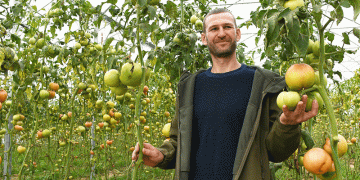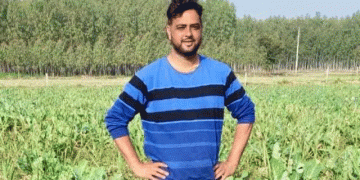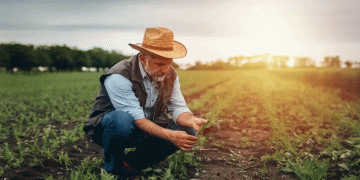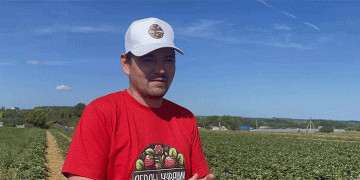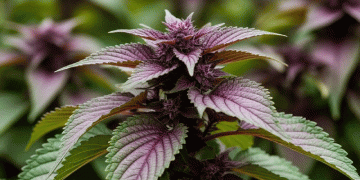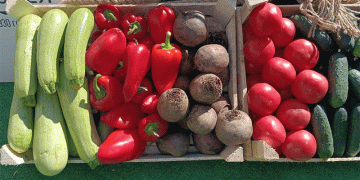J. Kings Foodservice Professionals Inc. has been in business since 1974 when it was founded by John King, and has been processing fresh-cut fruits and vegetables for the last nine years. In that time, demand for value-added products that provide convenience and safety has grown so much that the company recently expanded to a new facility that provides four times more space.
The company had $160 million in sales last year, with produce accounting for 35 percent of sales, Panagakos said. The company’s fresh-cut operation, Kitchen Cuts, has been in existance for the last nine years and the recent expansion is focused on continued growth. J. Kings started the process in it’s new building in Holtsville, on Long Island in New York, in 2000 and the new facility was completed last fall on a site about six or seven miles from the company’s headquarters. The new plant handles the Kitchen Cuts line and other food preparation operations. The company employs 330 and has an HACCP program, is approved by the American Institute for Baking and is certified by USDA in the meat-processing plant. The company is a member of PRO-ACT, the nationwide foodservice distributor, so third-party audits also are regularly conducted.
“It helps us out on the food safety side of things in a big way,” said Joel Panagakos, vice president for Westbrook Produce at J. Kings Foodservice.
Each day, J. Kings not only prepares fresh-cut produce and meat products and packs whole produce; it also has an on-site kitchen that prepares meals for the more than 300 employees. The company didn’t start out feeding employees, but chefs working on new menu items were giving the meals to the night crew, and eventually an area in the building was turned into a dining area. That idea has been expanded to the day crew with a sit-down café that provides free lunch to all employees. On a recent workday, J. Kings employees had the chance to try a filet mignon recipe that the chefs were developing for a high-end client, Panagakos said.
Kitchen Cuts
The new fresh-cut area is about 11,000 square feet and currently does 70,000 to 80,000 pounds a week, Panagakos said. The fresh-cut program does about 350 items for a wide range of customers, from hospitality and medical customers to white tablecloth restaurants.
The new supporting room was designed to prevent any foreign materials from entering the processing area. All of the produce is removed from bins or boxes onto a conveyor system, which takes the raw product into the cutting area. The waste is carried out in a flume system, then compacted and sold to nearby farms.
Cutting is done primarily by machines. About 75 percent of the fresh-cut items go through Urschel machines, and the remaining are cut by hand for special requests from customers. The hand-cut requests typically come from high-end restaurants – chefs looking for a specific profile – Panagakos said, but that’s dropped off a little bit with the recent downturn in the economy.
But one area that has been growing is foodservice to the healthcare industry. Because of the many dietary requirements of patients in hospitals or long-term care facilities, meal preparation can exceed the capabilities of hospital staff, so companies like J. Kings have filled that niche. Soups, for example, may have anywhere from three or four ingredients up to eight, depending on the dietary restrictions of the patient.
“In healthcare, the food safety aspect is a big part of it, but it’s also the labor aspect,” Panagakos said.
The new space and all-new equipment line has allowed the Kitchen Cuts division of J. Kings to develop new products, adding to its already long list of fresh-cut items. The company is working on new coleslaw blends and a line of fresh-cut fries.
Marketing the Company
One way J. Kings helps its foodservice customers is by having an executive chef, Chris Neary, on staff. He helps restaurants develop new menu items and is an integral part of the sales process by working with the executive chef of a restaurant to determine exactly what cut or flavor profile is needed for a menu item.
“There’s more credibility. I’ll always give the best suggestions, but a chef can go in and talk to a head chef and they speak the same language,” Panagakos said.
Another driving force restaurants and other foodservice customers are looking for is sustainability, which is often defined as local.
“For produce in particular, there’s a tremendous thrust for ‘go local,’” Panagakos said.
Local growers – from Long Island and the region – have fresh harvested product picked up by a Kings truck in the afternoon and is shipped to customers the next morning. The local movement is just one way the company is “going green” – there’s even a Go Green checklist that lets customers know the various ways the company is focusing on sustainability. Items on the checklist include:
• Recycling of cardboard, paper, milk cartons and glass and aluminum bottles.
• Increasing energy efficiency by turning off lights and computers at night.
• Reducing gas and emissions of the fleet by efficient scheduling, GPS-equipped trucks and converting the fleet of trucks to the Dodge Sprinter, which gets 22 miles per gallon.
• Reducing gas and emissions of employees by serving meals in the lunchroom and providing an ATM on-site, equipping sales vehicles with GPS and coordinating meetings in central locations to reduce travel to and from the central office.
• Reducing paper waste by conducting as much business online as possible – from banking to job applications.
Additionally, the company is looking at converting its fleet of sales cars over to hybrid vehicles, installing solar and wind energy equipment at its offices, further reducing paper by using electronic systems and supplying its employees with company-branded mugs and water bottles to reduce container waste.
J. Kings also has hired consultants to help restaurant customers make the most of their menus. The consultants helped develop the right portions and types of offerings, as well as how items were arranged on the plate to bring out the taste profile of the main dish, Panagakos said.
Last year, J. Kings launched a new campaign to benefit its restaurant customers that was very successful, Panagakos said. The company launched a new Web site, www.greatrestaurantsNY.com, that gives site visitors a searchable database of restaurants on Long Island as well as links to menus and restaurant Web sites. Some of the J. Kings trucks also had signage for customers’ restaurants on them instead of the J. Kings logo.
“We were advertising for the customers,” Panagakos said.
The program has been expanded five-fold this year. Between 150 and 200 restaurants already have signed on for the program.
“It’s hard for these guys to advertise, but by pooling their resources they can get their name out there,” Panagakos said.
As a full-line distributor of fresh produce and meats, a full-line processor of fruits and vegetables, J. Kings has expanded to include a marketing department that benefits customers. By helping bring diners into restaurants, Panagakos said he’s helping his customers succeed and helping the J. Kings business in the long run.














